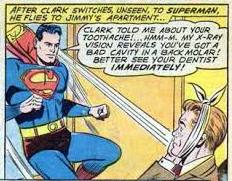The single most common question we get at the office is “Why do I need these x-rays?”. There is one simple reason… your dentist doesn’t have x-ray vision. Your teeth have 5 separate surfaces. Two of those surfaces we can’t see and are some of the most likely surfaces to get cavities. X-rays allow us to see those surfaces and treat decay before it turns into a dreaded root canal or extraction. Cavities aren’t the only reason we take x-rays though. X-rays allow us to see if you are losing bone around your teeth, cysts or tumors of the jawbone, and can alert us to several other medical conditions.
So how often do we need x-rays? When we first meet you, we always take a comprehensive set of x-rays if we don’t have a previous set of x-rays from your prior dentist. This is our standard of care and we simply cannot proceed without them. A dentist trying to diagnose dental disease without x-rays is like your medical doctor trying to diagnose and treat a broken bone blind. It just can’t be done well. For some people we need to take a full mouth series of radiographs which allows us to see all your teeth from various angles. For other people just taking bitewing x-rays and a panoramic x-ray allows us to see everything we need. After that we only have to update the full mouth series or panoramic x-ray once every 3-5 years. Usually bitewings are taken once a year but sometimes we need to take them more or less often based on your specific situation. We make every effort to take only the x-rays that we think are necessary based on your dental health.
Now you’re probably wondering how safe they are. I could talk and talk about how you get more radiation walking around each day than you get from your average set of dental x-rays or that medical mammograms or CT scans end up being about 500-2000 times more radiation than dental x-rays, but the best way to really understand is to see this chart below. Click on it to see how little radiation dental x-rays cause. It will make you feel a lot better about those couple of x-rays you get at the dentist’s office at your next visit.



